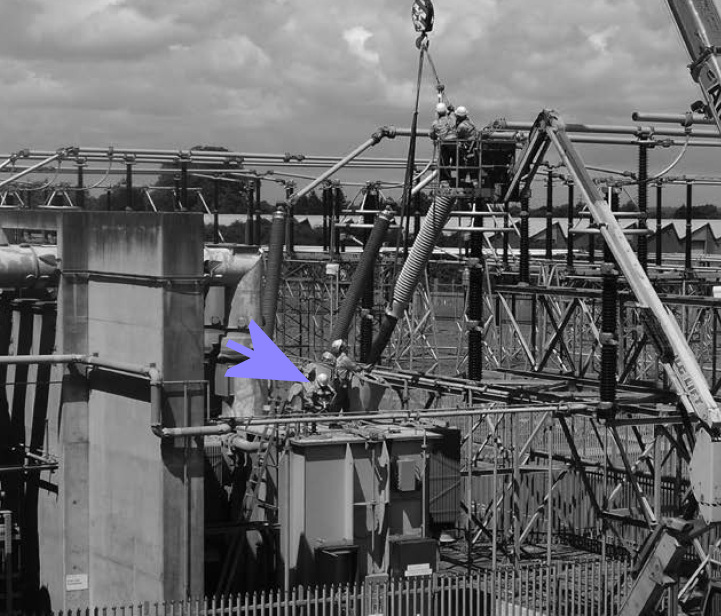Generally speaking, SMPS can mean anything, for example it can mean Scottish Members of Parliament Seminar, or Switched Mode power supply.
but Technically speaking SMPS is not quite like a conventional bulky wound iron core transformer, but because it uses high frequency chopping circuit (Electronics) it can it cane therefore perform a function that a conventional Transformer did for a particular application.
These days the trend is now to use SMPS in nearly everything from mobile phone chargers to you name it.
General public would not have a clue what SMPS stands for, they would go to a electrical store to buy LV Lighting, and they may ask the assistant for a suitable LV transformer, and the assistant may then fetch a low voltage (usually 12v) power supply, and place it on the counter, and when the customer picks it up and he gets amazed as to how light weight it is, most people are used to conventional low voltage power supplies using bulky and heavy iron core transformers, so now the store assistant tells the customer yes it uses Electronics and uses latest technology and so is lighter and cheaper and compact, and he may then tell the customer we call them electronic transformer.
Essentially speaking an SMPS is no where near comparable to a conventional Transformer except it can perform a same function that is to provide or convert Mains 230V AC into lower 12V or any other voltage and specified current.
Let us for now leave the LED lighting out of this Argument,since the LED lighting itself is very varaying and complex, some require 12V DC, others require constant current source, some don't even require a LV power source as they have built in power supply and can run directly off the mains 230V. Overall most power supplies used for running LOW VOLTAGE lighting are now manufactured using SMPS technology. Its main advantage being that it is light, efficient, generates less heat, and is compact, but it also emits some unwanted radiation (Electromagnetic interference) but this is kept to a minimum, and has to meet strict EEC Directives on EMC electromagnetic emissions, or else they will not be approved and given a certificate of conformity, and therefore legally cannot have a CE marking and sold in Europe legally.
So for most purposes, these SMPS are ok, they don't generally cause any harmful electromagnetic emissions and so most of your other equipment will not be effected by them unless they had developed a fault.
Most consumer goods now also run on SMPS, be it a PC, laptop, mobile phone chargers, video/dvd player, blue ray, washing machines, tumble, CH boilers, Nest controllers, anything for that matter, but general public doesn't need to know what kind of power supply their washing machine control board is running off, the days of bulky transformers are now numbered.
Though I hate to say, SMPS are far more unreliable than conventional transformers, and can tolerate less abuse.
So yes both Bernard Green and Winston are correct that the two are not the same, and I agree they are world apart, but for general public SMPS could mean anything, so instead many manufacturers started to call them Electronic Transformers, however, call them what anyone likes, including LED drivers.
The argument is pointless, an SMPS is not a Transformer, but it does a similar function, its like Doctors call a Transient Ischemic Attacks (TIA), for general public they have no idea what a TIA is and so it is referred to as a Mini Stroke. All Electronic Engineers will certainly know the difference between an SMPS and a Transformer they indeed are world apart.
Further more almost all SMPS use a small HF Transformer, its function within SMPS is almost same as in a conventional Transformer, but it is only needs to be a lot smaller for the same givcen power transfer.
1. For providing mains isolation
2. For converting HV mains to Low voltage DC, but at much much higher frequencies, hence why you would only need a small size transformer as opposed to a bulky iron core transformer.
Almost all SMPS provide means of input - output isolation, some very cheap mobile chargers with 3 pin plugs may not be true SMPS as they may employ a charge transfer using capacitor with its DC Negative rail being common with supply neutral, these can be lethal if the mains wiring was reversed, and can provide a fatal shock. Although I have not yet taken any apart to study them, but I cannot see how they can pack a true SMPS circuit in a size of case no bigger than a 3 pin plug. I will probably start taking some apart to see if they do contain any isolating transformer within them or do they just rely on some other factor to avoid giving consumers any shock.
The fact that even retailers of LV Lighting might get confused of you went into a store and asked for a Switched Mode Power Supply, they may raise their eyebrows? and may ask you if you mean 12V power supply for lighting, and so on.
Only the Electronic Engineers or those who studied the subject would truly know the true nature of SMPS and Transformer.
So a Transformer is not an SMPS and an SMPS is not a Transformer.


